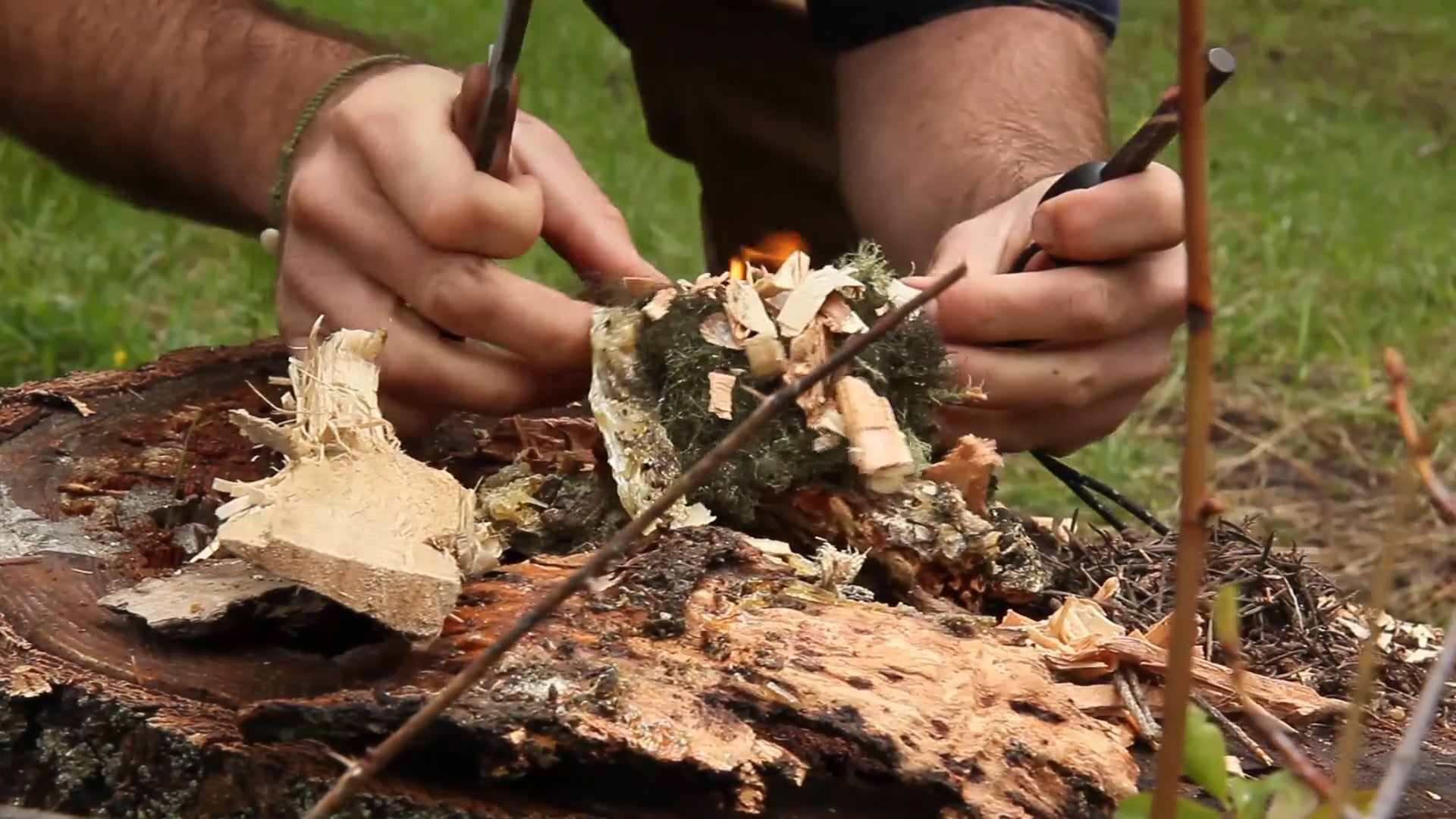If you camp, backpack, or adventure out in the wilderness often enough, you have probably learned that a fire is not only a source of heat but also a source of comfort and joy. We humans just feel a lot more at ease in the darkness of the forest when we control the power of a flame.
Unfortunately, sometimes, the weather will make it difficult to build a fire. Sometimes, you will have to overcome the challenge of making fire during a downpour. But, strong as the elements are, you must be stronger. You must learn how to start a fire in the rain.
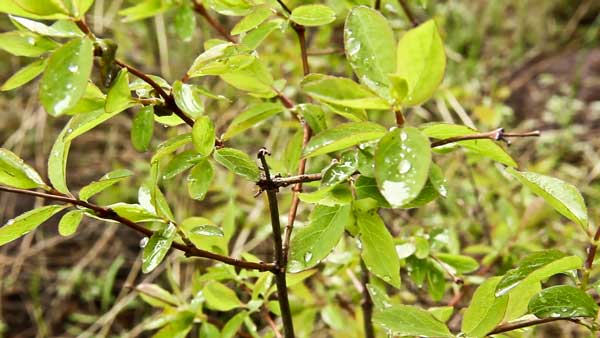
And, that is what we will teach you today. So that with nothing but your wits, your bushcrafting knowledge, and your steel blade, you will be able to provide warmth to yourself, your family, or a friend in the rainiest of conditions.
Not to mention, we will be employing the expertise of Jeff Zausch, survivalist, and star of “Naked and Afraid”.
1) Find Dry Shelter
If it’s possible, find a place that is sheltered from the downpour above. The less rain landing on your wood and tinder, the better. So, look for natural shelters that are at least slightly protected. Here are some “not so obvious” natural shelters to help you stay dry.
- Fallen logs and trees.
- Trees with dense foliage.
- Rock overhangs.
- Caves.
Of course, in some locations, such as open valleys or plains, it will be harder to find natural shelter. That’s okay though. Once the fire is going, the rain won’t matter as much. The hardest part is getting that first flame. To make it easier, find good tinder.
2) Find Tinder That Ignites When Wet
Try to find tinder that is already dry. Trees that are still standing are usually the best places to find tinder since the foliage above them has protected them from moisture. Some tinder also lights better in the rain than others.
Here are some examples of good tinder for fire starting in the rain.
- Pine Needles: These dry quickly. Due to their dense, fibrous nature, they are pretty resistant to water.
- Pine Sap: Look for it leaking down pine trees. This stuff burns very hot, even when wet, according to Jeff. Also, if you find pine sap, look at the base of the tree. Sometimes there will be a pile of sap, which is impenetrable and has therefore protected everything under it from the rain. Use your knife to pry up the sap and collect the dry materials hidden underneath (twigs, pine needles, bark).
- Tree Bark: The dryer side of a tree could have some tinder-worthy tree bark. Peel it off with your knife or hands. Then you can shave it into thin bits to use as tinder.
- Moss: Moss is very flammable, and can be found dry on the protected side of a tree.
- Old Man’s Beard: This is the long, lacy, greenish lichen that grows from tree trunks.
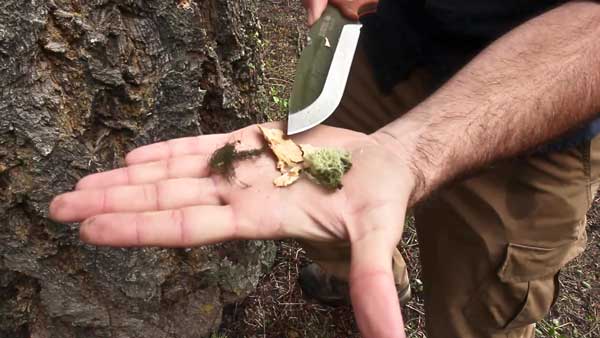
Pro Tip: It helps to come prepared with firestarters. Cotton balls, for instance, are great for catching a spark, especially when dipped in Vaseline. When lit, they can burn for 5-7 minutes. To make them spark easily, rip them apart so that the stringy fibers are sticking out.
Now, put your tinder together, and keep it safe from the rain.
3) Gather More Wood Than Normal
You are going to need both kindling and larger sticks. It’s better to be on the safe side and collect more wood than normal when it’s raining. You don’t want to have to leave your fire and run the risk of it going out while you search for more wood in the dark.
For larger sticks, find some that are about the width of your arm. If you have biceps like Popeye, maybe replace arm with “forearm”. Cut them into foot-long pieces of wood. Also, be sure to shave off the wet parts of the wood with your steel blade.
Pro Tip: If you are concerned about the wetness of the wood, perform the cheek test. Cut the limb or stick and put the freshly sliced wood against your cheek. If it feels dry, it’s good to use.
For kindling, you can use dry bark, small sticks, and trimmings from the larger limbs you found. A good steel blade comes in handy here, since you can turn the dry interior of a thicker piece of wood into small pieces of kindling.
4) Use a Dry Base
You want to avoid any wetness in the base of your fire. Even if the ground is just slightly damp, the tinder and kindling will soak up this moisture. So, try to find or build a dry base to keep your tinder as dry as possible. If finding a dry spot is futile, there are a couple of ways to create a dry base.
For one, you can use a tree stump. The top will be wet, but you can slice it off, leaving you with a dry base, as Jeff does in this video.
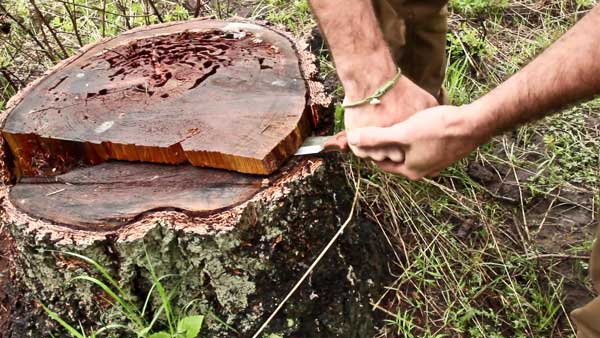
Secondly, you can build a base of dry sticks on which to place your first layer of tinder. For example, you can lay two larger logs parallel to each other. Then, across them, you can lay 4 smaller sticks. These sticks will create a raised base that is away from the wet ground. That’s where you can put your tinder.
Lastly, you can use a dry piece of flat bark as your base.
5) Build the Fire
In the rain, your ultimate goal is to get a flame going from your tinder. Then, once the flame is big enough to sustain itself, without the help of your breath, you can start feeding it with kindling.
The firebase we described above works well in the rain because the two large logs keep the tinder safe from the damp ground. After you have created the base, you can place down the tinder. Get it lit, then add kindling. Once the kindling is enveloped in flame, you can add larger sticks across it. But don’t smother it. Be sure to leave enough airflow for oxygen to enter.
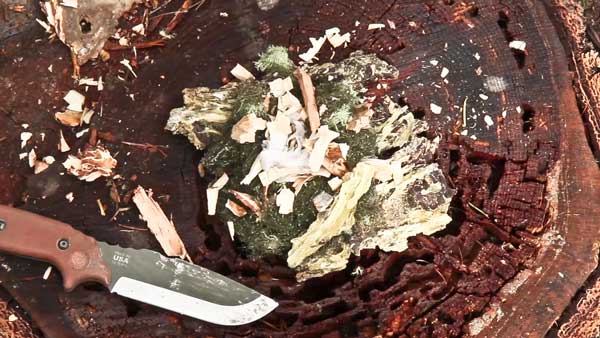
If you aren’t a strict adherent to the teepee or the log cabin styles, you can play around with different fire structures, like this one from scouting magazine.
Pro Tip: In the rain, your fire doesn’t have to be big, especially if you are solo-adventuring. Why? Well, when you build a large fire, you have to sit further away from it, thereby receiving less of the heat. With a smaller fire, you can sit close. No heat is wasted. Plus a small fire requires less wood, which is hard to come by in wet conditions.
6) Create the Spark
If you have matches or a lighter, go ahead and use it, potentially covering the top with your hand to protect the small flame from raindrops.
If, on the other hand, you are equipped with only a steel knife and a striker or flint, hold the knife at a 45-degree angle, and be sure to apply solid pressure to create sparks.
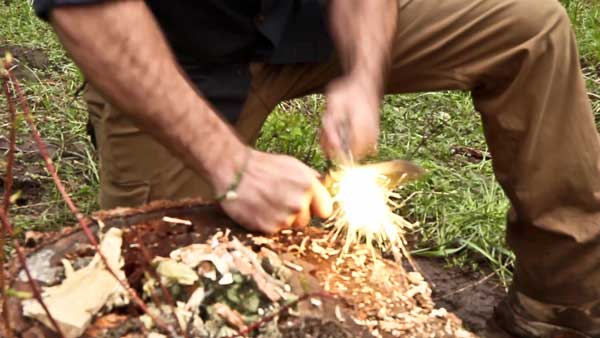
One problem a lot of people have when creating sparks with their knife is that they move their knife against the flint towards the tinder. So, sometimes they put too much force on the knife and hit the tinder pile, messing everything up. All that hard work is lost.
Luckily, SLYSTEEL is solving this problem with the Skeletek Bushcraft. With this knife, all you have to do is hold the blade and pull back on the striker. The blade doesn’t move, so neither does your tinder.
Self-Reliance in the Wilderness
In the wilderness, there are no free handouts. No one is there to help you but yourself. It’s just you and the forces of nature, which stretch from the awe-inducing to the intimidating and sometimes scary.
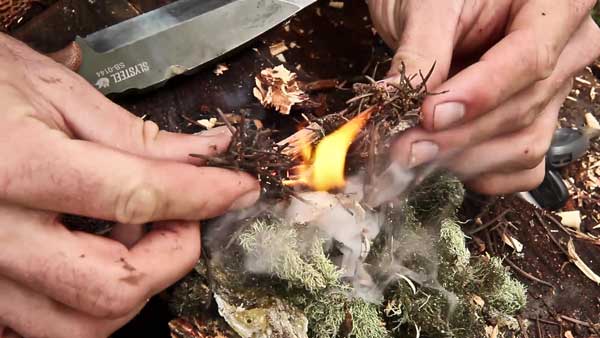
This makes outdoor survival a great way to test your self-reliance: your trust in your ability to lead yourself to success, without the help or opinions of others. So, get out there, shake your drenched head of hair, and howl to the moon over the beautiful fire that you made in the rain.

